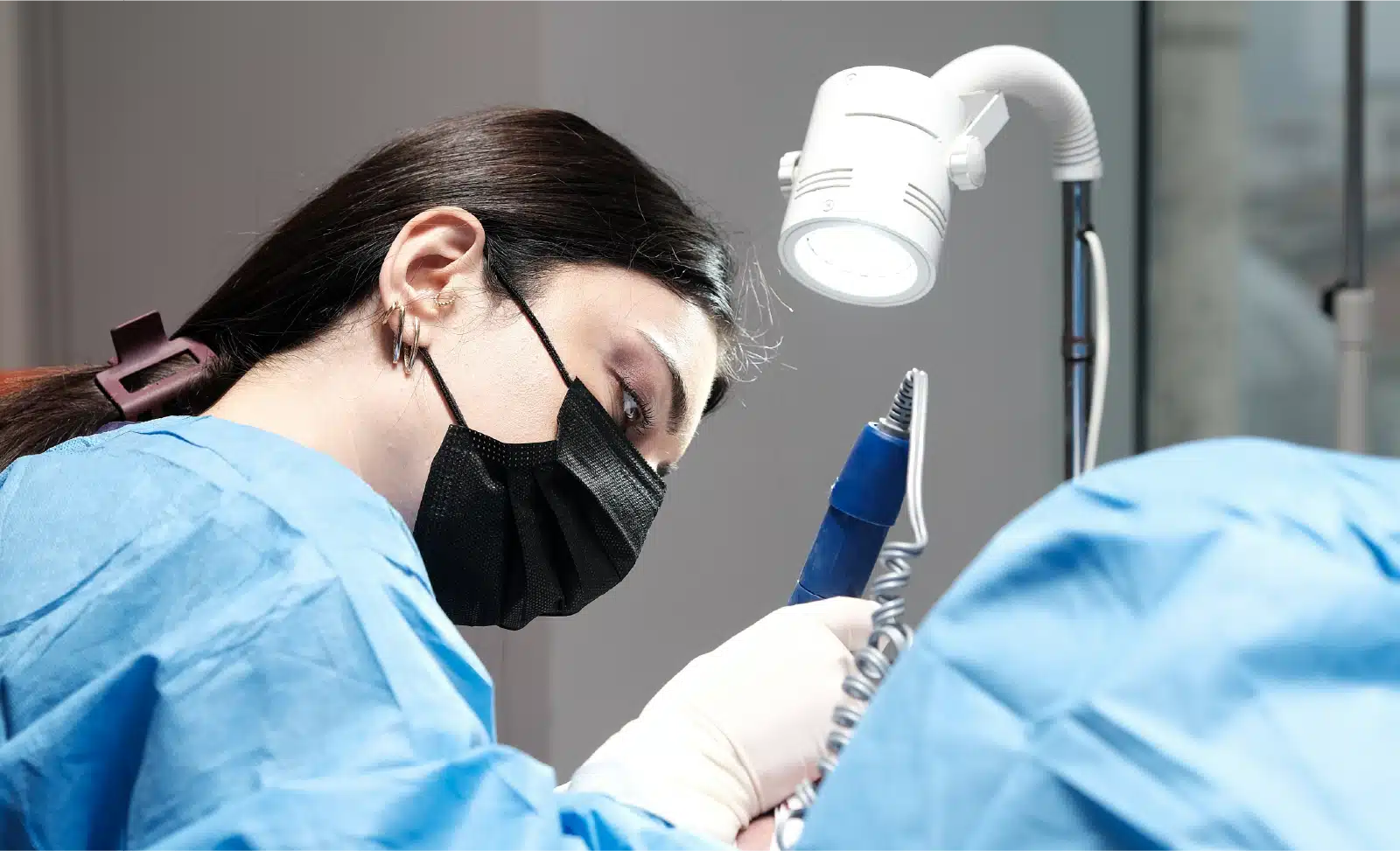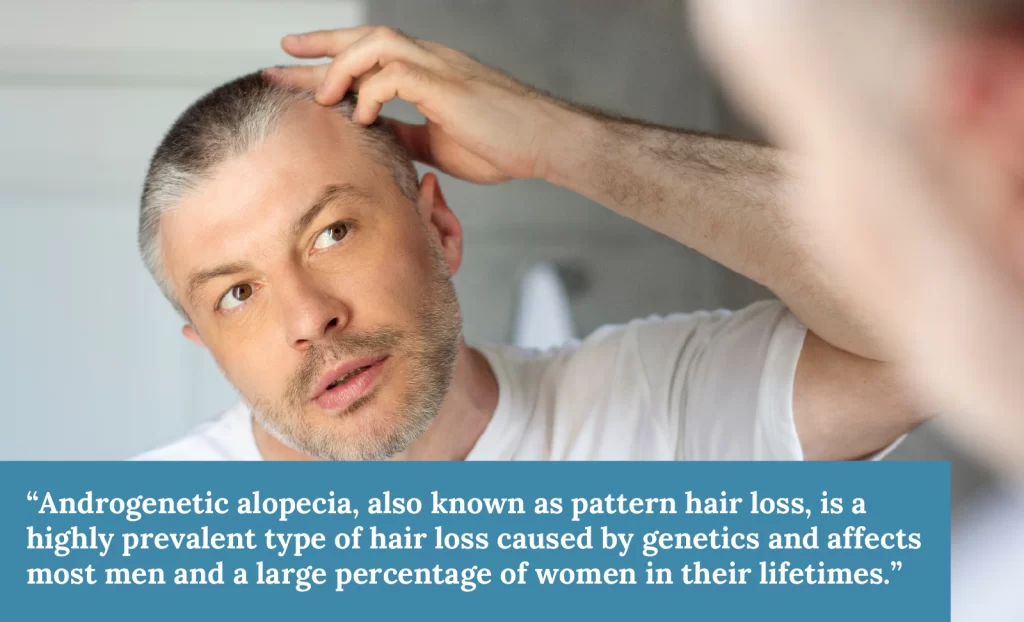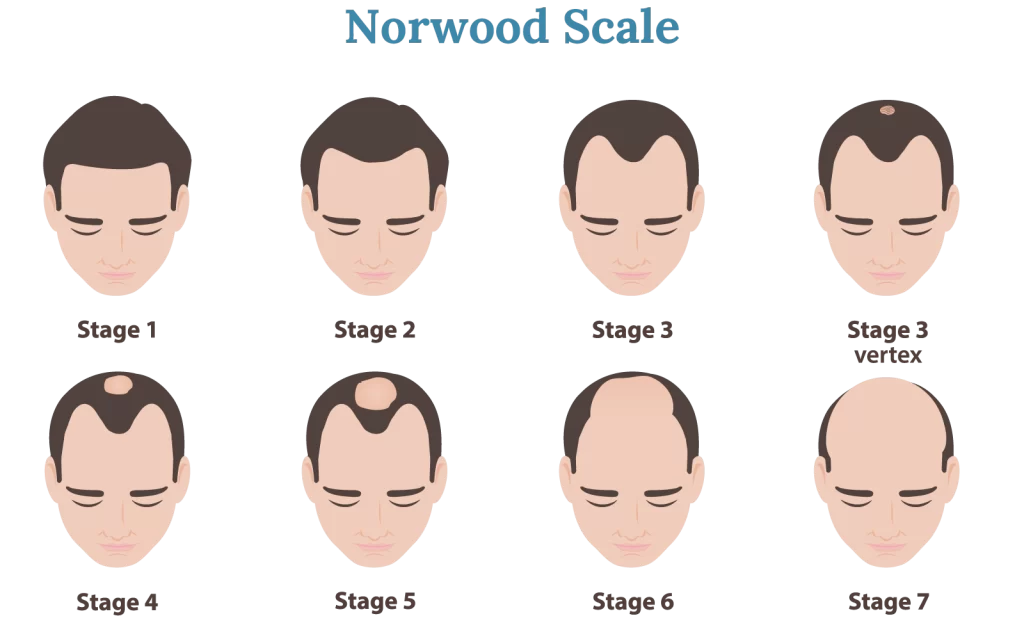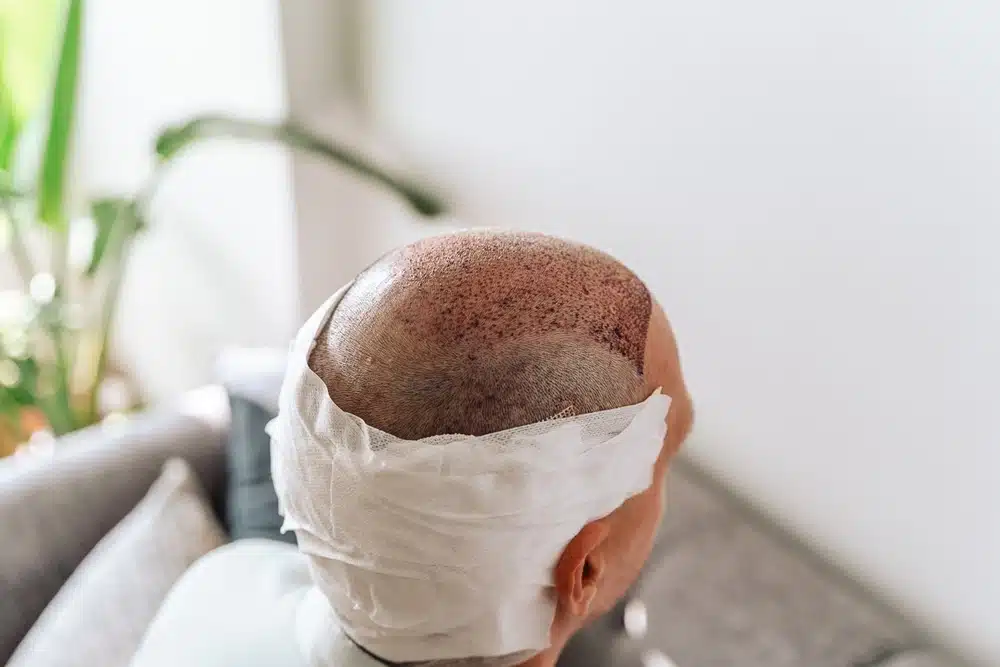A FUE hair transplant can provide a lifelong hair transformation that lets you say goodbye to the days of bald patches and a receding hairline. As such, it’s a popular treatment for many, especially those experiencing androgenetic alopecia (male and female pattern hair loss).
However, you can’t just stride into a hair transplant clinic and expect to receive an instant procedure. It’s a surgical process that requires consideration in order to achieve safe and effective results. With that in mind, the question you’re likely asking is, am I a good candidate for FUE? Find out in this guide!
What is FUE? The Process Explained
Before answering, “Am I a good candidate for FUE?” let’s first understand the procedure itself.
FUE stands for follicular unit transplantation, a modern hair transplant technique where the surgeon extracts individual hair follicles from the scalp (or another donor area) and then transplants them into the recipient area (often the crown or the hairline). These transplanted hairs then grow new hair in the area that was previously thinning or balding.
The reason FUE is popular is it creates natural-looking results with little scarring. Recovery is typically easy and quick, and results tend to show through after around three months, with full hair growth occurring after about a year. From there, most candidates can enjoy the results for a lifetime, making it a worthwhile investment.
Am I a Good Candidate for FUE? Points to Consider
A hair transplant procedure can transform both your look and your self-confidence, but you need to know if you meet the criteria. Otherwise, you might end up receiving less-than-perfect results or being turned away by a surgeon who chooses not to work on your scalp. To figure out whether you are a good candidate for hair transplant surgery, these are the points to first consider.
The Cause of Your Hair Loss
Do you know what is causing your hair loss? Understanding the reason behind your hair falling out is essential and should be your focus before deciding on any type of hair loss treatment, as certain treatments work better for particular types of hair loss.
Generally, a FUE hair transplant works best for androgenetic alopecia, also known as male or female pattern hair loss. It is a highly prevalent type of hair loss caused by genetics and affects most men and a large percentage of women in their lifetimes. [1] If this applies to you, the chances are FUE transplant is a good step to regaining your locks.
There are many other hair loss causes, though, from alopecia areata to telogen effluvium to alopecia universalis. These typically require a different kind of treatment.
Your Scalp Laxity
The chances are you do not know much about your scalp’s laxity, and that is okay. Scalp laxity refers to how much the scalp stretches, specifically over the scalp tissue. The greater the scalp flexibility, the more hair transplant grafts a person can typically receive.
Unfortunately, it’s difficult to test your own scalp laxity at home – instead, this is something a hair surgeon can measure when assessing the scalp for the procedure.
Your Age
Age plays a significant role in determining whether (or not) you are a good candidate for a hair transplant. You must be at least 18 years old to get a hair transplant, but it’s best to wait a few more years after turning 18 to get this procedure, even if you have experienced hair loss. That is because the best results from FUE hair transplant procedures occur when an individual’s hair loss has stabilised, which typically does not occur until they are 25 or older. If a person undergoes a hair transplant before their hair loss has stabilised, they might experience further hair loss even after spending a lot of money on the procedure, which is far from what anyone wants!
So, if you are under 25, consider waiting a few more years or trying alternatives first.
Your Medical History
There are certain health conditions that may influence your ability to undergo a FUE hair transplant, including:
Autoimmune Diseases: Autoimmune diseases cause the body to attack the immune system – after undergoing a hair transplant, this means a person’s body would attack the follicles, meaning little chance of success.
Some Mental Health Disorders: It’s not appropriate to offer cosmetic surgeries like a hair transplant to people with specific mental health disorders. For example, those with body dysmorphic disorder may have an unrealistic idea of their self-image, and surgical changes are not the best treatment for that.
Scalp Problems: Many scalp problems make it physically difficult to perform a FUE hair transplant. These include scalp psoriasis, scarring alopecia, and active seborrheic dermatitis.
Blood Disorders: Individuals with blood disorders like haemophilia are unlikely to be able to get a FUE transplant, as the procedure can lead to excessive bleeding.
There are other health conditions that may influence whether you are a good candidate for a hair transplant, so it’s best to speak directly to a hair specialist, which you can do by using our revolutionary hair track app.
Your Hair Characteristics
Your hair’s characteristics impact the outcome of a hair transplant and can even influence whether it’s worth the procedure (or not). One example is thick hair vs thin hair; thicker hairs mean fewer transplanted follicles are needed to create the effect of full hair in the recipient area. Hair texture also plays a role, with curlier hair (hair that grows in a spiral pattern) tends to need more surgical precision to ensure proper growth direction.
Regarding hair characteristics, the amount of hair loss you have sustained also matters. This is where the Norwood Scale comes in handy, a classification system that measures the extent of male pattern baldness. [2] It runs from 1 to 7, with 1 being a minimal amount of hair loss with some hairline recession, and 7 showcasing a fully bald top of the head. Generally, for the most effective hair transplants, it’s best to be between stages 3 to 5, although you can get a hair transplant if your hair is reaching 6 to 7 levels in some cases.
Having an available donor area is key here. You need a donor area that has a high density of hair follicles – ones that can be used to create a full head of hair.
Your Expectations
While it’s true that FUE hair transplants can boost hair thickness and density, fully eliminating bald spots and receding hairlines, it’s important to have realistic expectations before undergoing this hair restoration surgery.
Not everyone experiences the same results, and some factors influence outcomes, such as paying less for a cheaper surgery or undergoing the procedure even if you don’t have good donor areas or your hair loss hasn’t fully stabilised.
It’s also important to remember that results from a FUE procedure never happen overnight. Instead, it takes at least several months for results to begin showing through, so it is a game of patience.
What if You Are a Good Candidate for FUE?
The best candidate for FUE hair transplant surgery is one that ticks off all of the points listed above – for example, someone who is 30 years old with stabilised hair loss and no medical conditions would likely meet the criteria to a tee.
If that sounds like you, the next step is to find a reputable hair loss treatment clinic and book a consultation with a surgeon. During a consultation, you can learn all you need to know about FUE hair transplants and whether you truly are a good candidate.
What if You Aren’t the Right Candidate for FUE?
Have you read the list, asked yourself “Am I a good candidate for FUE?” and determined that you are not suitable for the FUE hair transplant? Even if this is the case, it is still worth contacting a hair specialist and discussing your options, as a good surgeon might be able to work with your scalp.
Keep in mind there are plenty of other hair restoration treatments available that don’t involve FUE, so you could consider one of these if you aren’t a good candidate for surgery. These include:
- Hair Loss Medications (such as minoxidil and finasteride)
- Microneedling
- Platelet-Rich Plasma Injections
- Scalp Micropigmentation
- Low-Level Laser Therapy
- Scalp Reduction
- Wearing Wigs/Hair Pieces
Ready to Transform Your Look?
Is the answer to “Am I a good candidate for FUE?” yes? If so, you are in the right place.
At Harley Street Hair Clinic, we endeavour to transform as many individual’s hairlines as possible. If you have experienced hair loss and are ready to turn back the clock, we can help you. Whether you simply want to learn more about the FUE procedure or are interested in booking a full consultation at our clinic, contact us today. You can also head to our patients gallery to see what our incredible specialist team have already achieved!
Sources:
- https://www.alopecia.org.uk/androgenetic-alopecia-pattern-hair-loss
- https://www.healthline.com/health/norwood-scale





